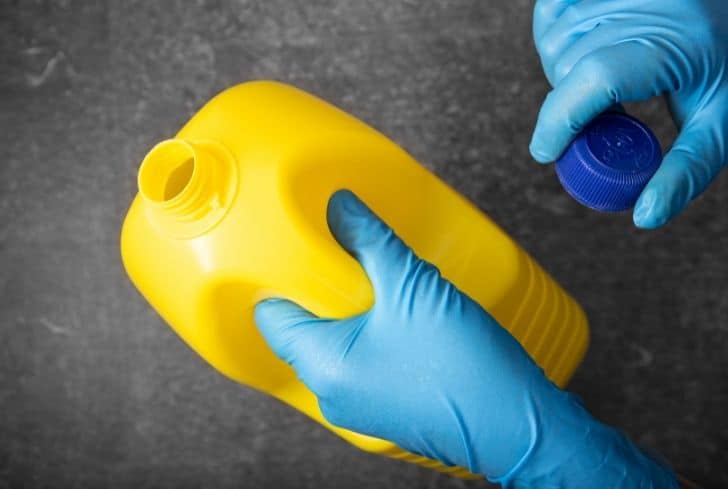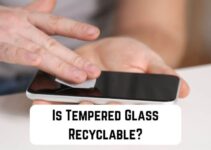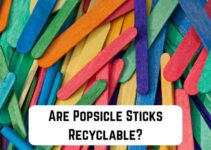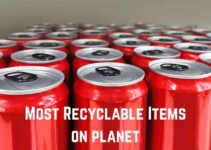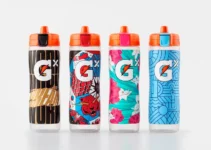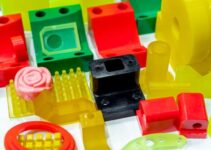You cannot clean an area without having bleach with you. Bleaches are an essential cleaning accessory, and everyone has a bottle of bleach somewhere in their home they can easily access when there is an urgent need to clean something. People confuse bleaches with disinfectants; although they are very similar, there are still some slight differences.
Bleach is a strong disinfectant; while some bleaches remove stains, whiten materials, and disinfect as well, others remove stains and whiten. Regardless of the type of bleach you have, whether powdered or liquid, it is stored in a bottle. And when you have used up the bleach, what do you do with the bleach bottle?
As an environmentally conscious person, you would always have a question about the proper disposal of every item you own. The question; how can bleach bottles be disposed of? And many other questions you would have about the impact of bleach and bleach bottles on the environment will be answered in this blog post.
Are Bleach Bottles Recyclable?
One of the best things man has done is to recycle waste items. Rather than dumping waste in landfills or incinerating it, we can recycle it. Recycling is the process of converting waste materials into new materials. So, the question is, can any new item be produced from old bleach bottles?
Of course, bleach bottles are recyclable. Many people assume bleach bottles are not recyclable because of the contents inside, so the empty bleach bottles in their homes end up in the waste bin instead of the recycling center. As long as the bottles are emptied and thoroughly cleaned, they can be recycled.
Although many recycling centers do not accept bleach bottles, there are a few that recycle them. Most recycling centers do not accept plastic and its by-products because of the difficulties and intense process required to recycle them. Recycling facilities that recycle bleach bottles usually use them to produce recycled watering cans.
So, you must keep in mind that before you put bleach bottles in the recycle bin or take them to a recycling facility, you must first empty the bottles of all their content. After emptying the bottles, be sure to wash them thoroughly and replace the lid.
Some people remove the bottle labels; this is not accepted. Leave the bottle labels so the workers at the recycling facilities can identify the bottle and know its use. We mentioned earlier that most bleach bottles are recycled into watering cans. If the workers cannot identify the bleach bottle, it will be in the wrong recycling pile.
Can You Reuse Bleach Bottles?
If you have a lot of bleach bottles, you might have thought of reusing them. Since they are plastic bottles and most plastic bottles can be reused, why shouldn’t you reuse bleach bottles.
You can reuse bleach bottles at least a few times. However, before reusing bleach bottles for storing other liquids, you should wash the bottle properly with hot soapy water. Doing this will make the bottle safe for the few times you want to reuse it.
With recent studies, health advocates have proved that reusing plastic bottles, including bleach bottles, might not be safe, especially if the bottle is produced from PET. They advise that every plastic bottle produced from PET should be used once and never reused.
Studies have proven that PET bottles release DEHP (a probable human carcinogen) when the bottles have been structurally compromised and not in perfect condition. So, before you try to reuse a bleach bottle, you should check for the raw material used to produce it. If it is PET, dispose of it after usage.
Another important thing to know about reusing bleach bottles is that there is a limited number of times you can reuse them. Reusing a bleach bottle many times will reduce the quality and condition of the bottle. There is an increased chance of the bottle developing cracks, and chemicals can leak out of the cracks.
If the bleach bottle is produced from High-Density Polyethylene (HDPE), Polypropylene (PP), or Low-Density Polyethylene (LDPE), you can reuse them repeatedly. If you are lucky to have a stainless steel or aluminum bleach bottle, you can also reuse them as many times as you want.
On no condition should you try to use a bleach bottle to hold food or drinks. No matter how clean you wash a bleach bottle, you must never use it for drinking water. Bleach and human health are not close. Chemicals are used to produce the bleach bottle, and the chemicals may have permeated the bottle. So, no matter how well you try to wash it clean, you cannot get it clean and safe for drinking water.
Avoid using toilet cleaners or ammonia when cleaning bleach bottles for reuse; they react with bleach, making the bottle unfit for use. Ingesting bleach can result in mouth and throat irritations.
Are Bleach Bottles Bad For The Environment?
We have been made to believe that the toilet is one of the dirtiest places in our homes, so we spend a huge amount of money trying to make it remain clean. This is the reason the toilet care industry is a multi-million dollar industry. No one questions the impact of the cleaning products used.
However, with the deteriorating state of the environment, environmentally conscious people question the impact of these cleaning products on human health and the environment. The big question is, are bleach and bleach bottles bad for the environment?
Bleach bottles are bad for the environment. They are made from plastic, one of the most unsustainable and toxic materials on the planet. Bleach itself is dangerous to the environment; it is produced from a chemical called organochlorine. This chemical is not produced naturally, and it takes a very long time to decompose.
When bleach bottles have been emptied and are not disposed of properly, they will pollute the environment. If the bottles find a way of getting into bodies of water, they pollute the water and harm all aquatic organisms in that body of water.
When bleach is in water, it reacts with other chemicals to produce dioxins, a very dangerous toxin that seriously impacts the health of humans and animals.
When bleach bottles are dumped in landfills, they take a long time to biodegrade, plastic does not easily biodegrade, and with the bleach residue still in the bottle, it takes a longer time to biodegrade. As it biodegrades, it releases toxic fibers into the surrounding area. These toxins are dangerous to both the organisms in that environment and the fertility of the environment.
Does Bleach Go Bad?
Every item and product has a lifespan; nothing is designed to last forever. At a point, it begins to deteriorate and lose value. Although this is the fact, many people do not know, so they are surprised when they find out that some of the products they purchased have gone bad and cannot be used.
Bleach can go bad; it has a shelf life of approximately six months. However, if you store bleach properly, it can last for about twelve months before its effectiveness begins to drop by twenty percent. Once the bleach has gone bad, it is similar to pain saltwater and loses its effectiveness.
Different factors can shorten the shelf life of bleach; they include light, temperature, and contaminants. Extreme temperatures above or below 70° degrees Fahrenheit can speed up the expiration of bleach. Contaminants like oil and paint stored in the same location can also affect the shelf life of bleach.
When bleach is exposed to light, the shelf life is reduced; mixing bleach and water also reduces the shelf life of bleach. This is why bleach is to be stored in an opaque bottle. If you want your bleach to last for a long time, store it in a dark area and at room temperature.
3 Amazing Ways To Do With Empty Bleach Bottles
There are two effective ways of disposal, recycling and upcycling. Many people are aware of recycling, and that is the option they choose. On the other hand, upcycling is what people refer to as Do It Yourself (DIY) ideas. You use the item you want to dispose of to create new things. Let us see some innovative things you can do with empty bleach bottles.
1. Drip Irrigation
You can use empty bleach bottles to irrigate your plants. With a bleach bottle, you can channel a slow and steady supply of water to a plant. The first thing to do is to wash the bleach bottle thoroughly and leave it to dry. If it is possible to wash the bottle until the smell of the bleach is gone, do that.
Next, use a small nail or a pin to punch some holes at the bottom of the bottle. Ensure the holes are not too wide nor too tight. If the hole is too wide, the water will drain away quickly, and if it is too tight, the water will not flow out. Then, fill the bottle with water and place it beside the plant. The water will seep into the soil slowly. You will find this helpful for tender plants, especially if you will not always be around to water them.
2. Toilet Brush Holder
Rather than spending money to purchase a toilet brush holder, you can make one from empty bleach bottles. First, wash the bleach bottle thoroughly, this is not important, but it is a good thing. Then, mark out the part you will cut out, ensure you leave enough of the handle and a groove where the spout was; this is to hold the brush handle.
Next, cut out the marked part carefully. You can choose to decorate your brush holder using permanent markers. You can also use this for other purposes besides the toilet brush holder. You can use it to store supplies under your sink, in the laundry room, and you can even use it as a trash can.
3. Book Holder
This is a good idea if you read a lot. Who would have thought of using an empty bleach bottle as a book holder? You would need a wooden plank, empty bleach bottles, scissors, pliers, screwdriver, screws, and felt pads. The first thing to do is to wash the bleach bottle thoroughly and leave it to dry.
Next, mark out the outline of a book holder on the bottle and cut it out. Place the bottles on the plank, and using two screws for each bottle, screw them into the axis at the two ends of the base. Start from the central bottle. Drill holes into the bottles, one hole halfway up and the other at the top.
You can use a metal eyelet to join the walls of the bottles together, then apply the felt pads under and on the sides of the axis. You have made a book holder.
Conclusion
Many of the items we use every day are toxic and dangerous to the environment. But many people are not aware, so they use and dispose of them carelessly. We have curated this blog post to enlighten you on the impact of bleach and bleach bottles on the environment. We have also compiled some innovative upcycling ideas for old bleach bottles.
References:
https://www.thoughtco.com/reusing-plastic-bottles-serious-health-hazards-1204028
